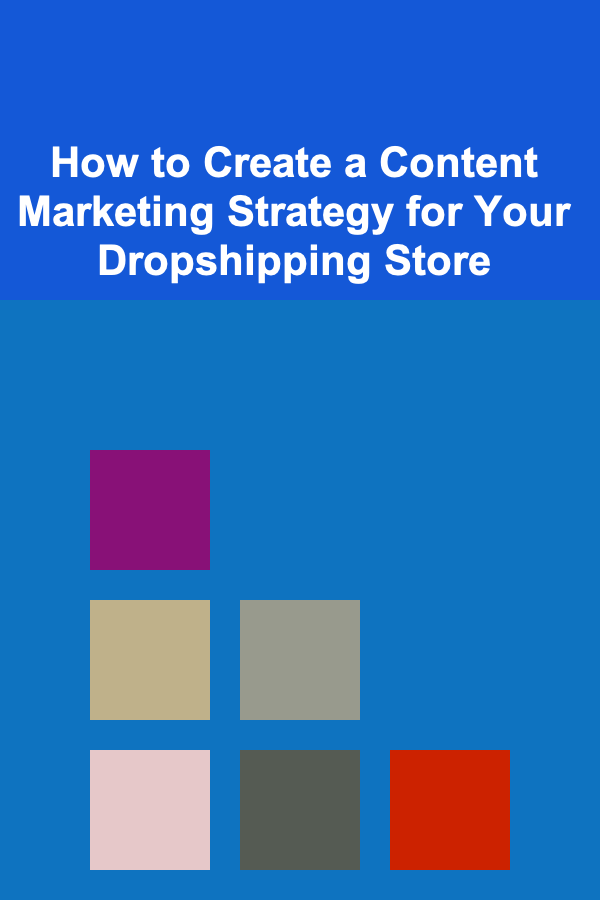
How to Track Customer Behavior: A Checklist for Better Retention Insights
ebook include PDF & Audio bundle (Micro Guide)
$12.99$8.99
Limited Time Offer! Order within the next:

Understanding customer behavior is one of the most crucial components of building a successful business. When you know how your customers interact with your products or services, you can create personalized experiences, address pain points, and ultimately increase customer retention.
Customer retention isn't just about keeping customers; it's about understanding them on a deeper level to drive continuous value. This actionable guide provides a comprehensive checklist on how to track customer behavior effectively, offering insights that can lead to better customer retention strategies.
1. Set Clear Objectives for Tracking
Before diving into the tracking tools and methods, it's essential to define your objectives. What do you want to achieve by tracking customer behavior? Without a clear objective, the data you gather may not provide actionable insights.
1.1 Identify Key Business Goals
Start by aligning your tracking efforts with broader business goals. For example:
- Increase Retention Rates: Track behaviors like how often customers make repeat purchases or engage with your content.
- Improve Customer Lifetime Value (CLV): Measure how different customer behaviors correlate with high-value, long-term customers.
- Optimize Onboarding: Track interactions during the onboarding process to identify where customers drop off or get stuck.
1.2 Understand Your Audience Segments
Not all customers behave the same way. Segment your audience based on demographics, purchase history, behavior patterns, and more. This will help you understand specific needs within different customer groups and tailor your retention strategies accordingly.
2. Leverage Analytics Tools to Capture Behavior
Once your objectives are defined, you'll need the right tools to capture customer behavior data. Here are some of the most effective tools and platforms:
2.1 Web Analytics Tools (Google Analytics, Mixpanel, etc.)
These tools help you track on-site behavior, such as:
- Page Visits: Which pages are customers visiting most frequently? Which pages do they drop off at?
- Session Duration: How long are customers staying on your site, and which sections are they spending the most time on?
- Exit Pages: Identifying where users are leaving can help pinpoint friction points that lead to drop-offs.
2.2 Customer Relationship Management (CRM) Tools (Salesforce, HubSpot, etc.)
CRMs allow you to track interactions across multiple touchpoints:
- Purchase History: Which products or services do customers tend to buy, and how often?
- Customer Interactions: Monitor email opens, clicks, and responses, as well as support requests and feedback.
- Customer Journey Mapping: Track where customers are in their lifecycle (prospect, new customer, repeat customer, etc.), enabling targeted engagement strategies.
2.3 Behavioral Analytics (Hotjar, Crazy Egg, etc.)
These tools provide insights into how users interact with your website's design and user experience (UX):
- Heatmaps: Visual representations of where customers click, scroll, or hover most frequently.
- Session Recordings: Watch real-time recordings of how users interact with your website.
- Surveys and Feedback: Use on-site surveys to gather direct insights from customers about their experiences.
3. Track Key Customer Behavior Metrics
Now that you have the tools in place, it's time to focus on the specific metrics that matter most for customer retention. Here's a list of key customer behavior metrics you should be tracking:
3.1 Engagement Metrics
- Page Views & Time on Site: Track how much time customers spend on your site or product, and which pages they visit. Long sessions usually indicate interest, while short sessions may suggest a lack of relevance or engagement.
- Click-Through Rate (CTR): Track how often customers click on links or CTAs in your emails, blogs, or other communication channels. Low CTR can signal that your content or offers need optimization.
- Content Interactions: Measure how often customers engage with your content, whether it's reading blog posts, downloading resources, or watching videos. This will help you understand what content resonates with your audience.
3.2 Customer Purchase Behavior
- Purchase Frequency: Track how often customers make purchases. A sudden drop in this metric might signal that a customer is losing interest.
- Average Order Value (AOV): By measuring how much a customer spends per transaction, you can identify opportunities to increase AOV through upsells, cross-sells, or bundle offers.
- Repeat Purchases: Determine how many customers come back for more after their first purchase. This can give you insight into how well you're building long-term loyalty.
3.3 Churn Indicators
- Cart Abandonment Rates: If customers frequently abandon their shopping carts, it's a strong signal that something is preventing them from completing their purchase. Track abandonment rates by various segments (device type, traffic source, etc.).
- Inactive Users: Keep an eye on customers who have stopped engaging or purchasing over a certain period. A customer who hasn't interacted with your brand in 30 days might be at risk of churning.
- Support Requests: An increase in support tickets or complaints may indicate that customers are having issues with your product, which could lead to churn if not addressed.
3.4 Customer Feedback & Satisfaction
- Net Promoter Score (NPS): Use NPS surveys to gauge how likely customers are to recommend your product to others. This metric is closely related to customer loyalty and satisfaction.
- Customer Satisfaction (CSAT): After key interactions (e.g., support resolution, purchase, onboarding), send surveys asking customers how satisfied they are with the experience. Low satisfaction scores may be an early warning of retention issues.
- Product Reviews & Ratings: Track reviews on your website or third-party platforms like Trustpilot or Google. Negative reviews may signal areas of improvement, while positive reviews can be used to enhance your retention strategies.
4. Use Behavioral Data for Segmentation
Understanding customer behavior allows you to segment your customers more effectively. Here's how to use behavioral data for smarter segmentation:
4.1 Segmentation by Lifecycle Stage
Segment customers based on where they are in the customer journey:
- New Customers: Track their early interactions, from sign-up to their first purchase. Optimize onboarding to ensure they have a positive first experience.
- Engaged Customers: These are customers who frequently engage with your brand but haven't made a purchase in a while. Develop targeted campaigns to encourage them to convert.
- Loyal Customers: Loyal customers are frequent buyers. Keep them engaged with special rewards, exclusive offers, or VIP treatment.
4.2 Behavioral Segmentation
Based on specific actions (e.g., visits, clicks, purchases), you can create segments such as:
- Frequent Visitors but Rare Buyers: These customers are highly engaged but aren't converting. They may need personalized offers or reminders to complete their purchase.
- One-Time Buyers: These customers made a single purchase but haven't returned. Send them follow-up emails with relevant offers to entice them back.
- Cart Abandoners: These customers add products to their cart but don't check out. Use retargeting ads, emails, or special discounts to bring them back.
5. Personalize Your Retention Strategies
Once you've tracked and segmented customer behavior, it's time to use that data to personalize your retention strategies. Personalization drives deeper engagement and can significantly improve retention rates.
5.1 Personalized Email Campaigns
Leverage behavioral data to send targeted email campaigns based on customer actions:
- Abandoned Cart Emails: Send automated emails to customers who left items in their cart, offering a discount or reminder.
- Post-Purchase Emails: After a customer makes a purchase, follow up with recommendations, tips, or how-to guides to keep them engaged with your product.
- Re-engagement Campaigns: For inactive customers, send personalized emails to bring them back with special offers, updates, or relevant content.
5.2 Product Recommendations
Use purchase history and browsing behavior to recommend products:
- Upsell and Cross-sell: Suggest complementary products based on previous purchases.
- Personalized Offers: Tailor discounts or loyalty rewards based on customer behavior, increasing the likelihood of repeat purchases.
5.3 Create Exclusive Loyalty Programs
Reward loyal customers for their ongoing engagement:
- Points-based Systems: Offer points for every purchase or action, which can be redeemed for rewards.
- VIP Perks: Provide exclusive access to new products, discounts, or special events to keep your most loyal customers engaged.
6. Monitor and Refine
Customer behavior is constantly evolving, so it's important to continuously monitor and refine your tracking processes and retention strategies.
6.1 Regularly Review Metrics
Check your key metrics regularly to identify trends and areas for improvement. Look for:
- Declining Engagement: If engagement drops, investigate potential causes (e.g., poor email performance, site issues).
- Churn Patterns: If churn rates rise, delve into the behavioral data to identify whether customers are experiencing pain points.
6.2 Refine Segmentation and Personalization
Your segmentation strategy should evolve as you gather more data. Continuously refine your customer segments and personalize your engagement strategies based on the latest behavior trends.
Conclusion
Tracking customer behavior is not just about collecting data; it's about using that data to understand and anticipate customer needs. With the right tools, metrics, and strategies in place, you can gain invaluable insights into customer behavior that drive better retention and long-term success. Use this checklist as a starting point, and remember that the goal is to continually refine your approach, ensuring that you're meeting the evolving needs of your customers.

How to Create a Content Marketing Strategy for Your Dropshipping Store
Read More
How to Ensure Accessibility and Inclusion in Your Workshop
Read More
How to Lock Down Your Home's Electrical and Plumbing Systems for Safety
Read More
How to Make Money Online as a Paid Survey Taker: 10 Actionable Ideas
Read More
How to Soundproof Your Home for a Peaceful Home Office
Read More
How to Use Labels to Identify Fishing Supplies Easily
Read MoreOther Products

How to Create a Content Marketing Strategy for Your Dropshipping Store
Read More
How to Ensure Accessibility and Inclusion in Your Workshop
Read More
How to Lock Down Your Home's Electrical and Plumbing Systems for Safety
Read More
How to Make Money Online as a Paid Survey Taker: 10 Actionable Ideas
Read More
How to Soundproof Your Home for a Peaceful Home Office
Read More